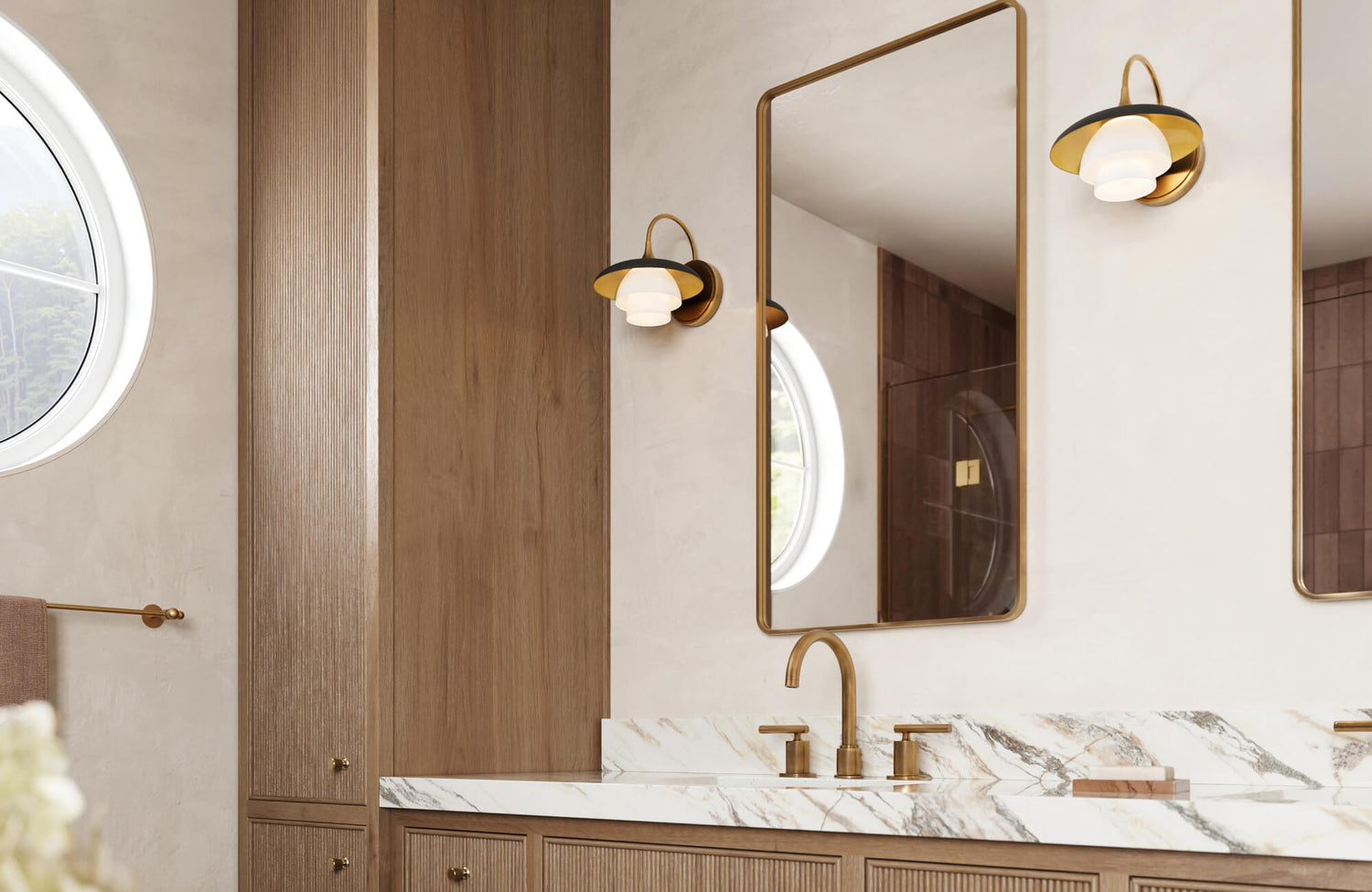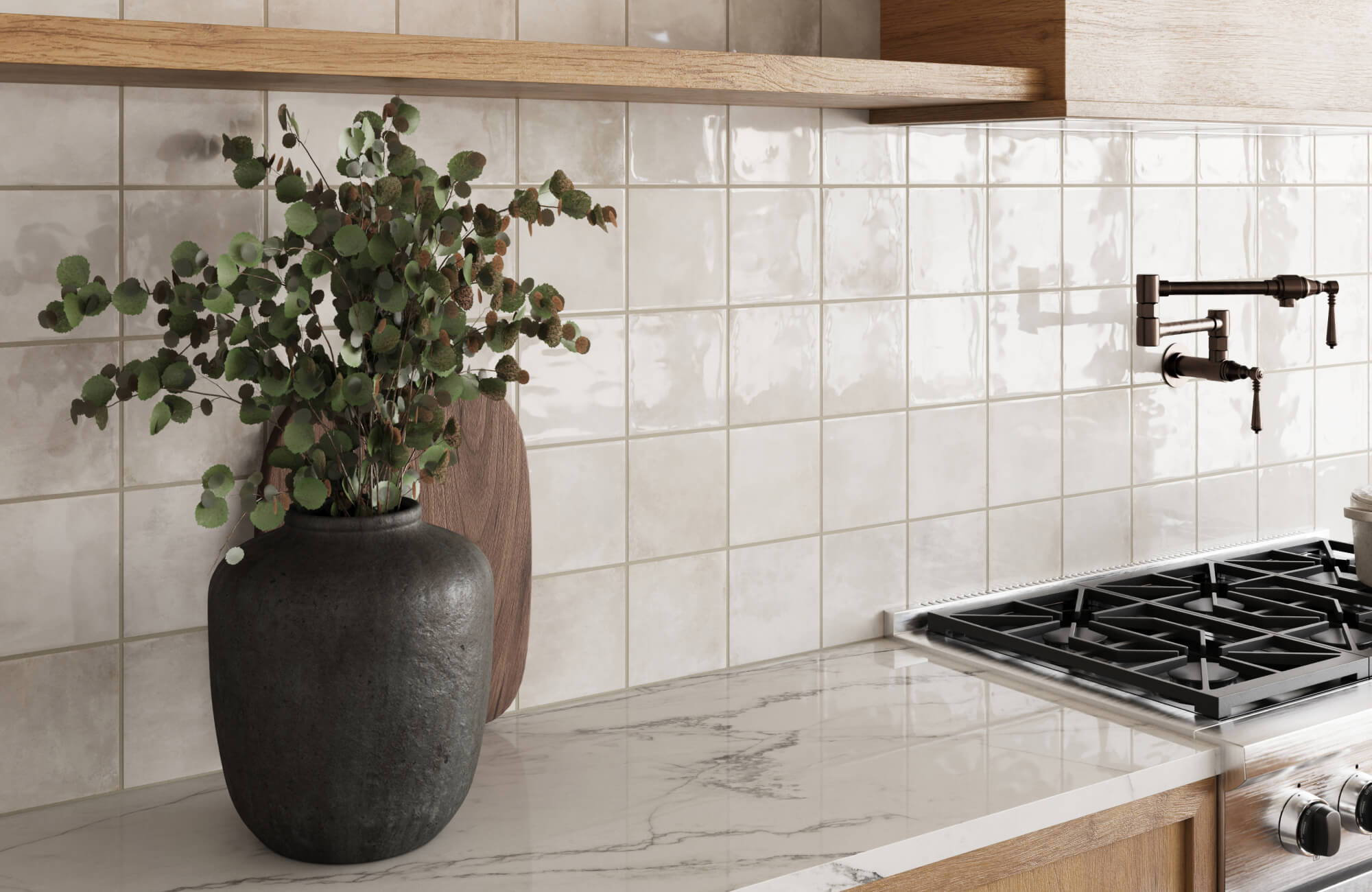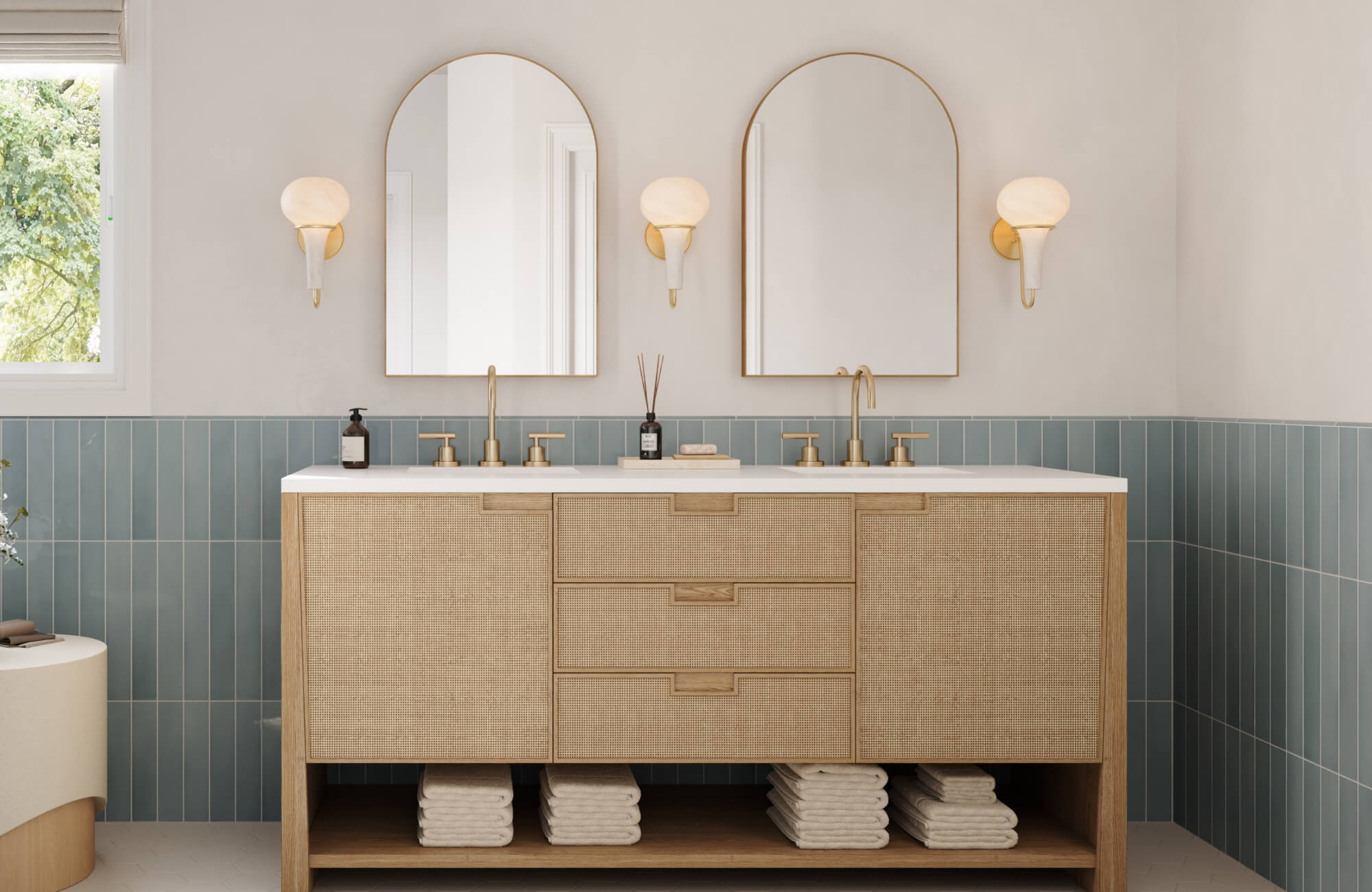Lighting plays a pivotal role in interior design, not only in illuminating spaces but also in shaping their ambiance and aesthetic. Among the many wall-mounted fixtures available, two commonly confused types are sconces and picture lights. While they share similar mounting methods, their intended functions, designs, and applications vary significantly. Understanding these differences helps homeowners and designers make informed choices that enhance both function and style. This article breaks down each fixture's purpose, style, and impact to guide your lighting decisions.
Understanding Sconces
Sconces are among the most adaptable and visually diverse lighting fixtures, capable of serving a range of lighting needs from ambient to task-based. Let’s explore their historical roots, functional styles, and role in architectural enhancement.
From Torches to Modern Wall Fixtures
Sconces have a history stretching back centuries, originating as simple torch holders on stone walls in medieval castles. Over time, as lighting technology evolved, so did the design and purpose of sconces. During the Victorian era, gas-lit sconces featured elaborate decorative elements, while the Art Deco period introduced geometric designs and symmetry. Today, contemporary sconces embrace everything from industrial to minimalist aesthetics, making them suitable for nearly any interior style.
A Sconce for Every Need
The sheer variety within the sconce family is astounding, offering a solution for nearly every lighting need and design preference. From the subtle upward glow of an up-light sconce that washes ceilings with ambient light, to the focused downward beam of a down-light ideal for task illumination, their forms are diverse. ADA compliant sconces, designed with specific projections to meet accessibility standards, ensure safety in public and private spaces. Swing arm sconces offer adjustable task lighting perfect for bedside reading, while armed sconces extend gracefully from the wall, often with exposed bulbs. Flush mount sconces, on one hand, sit snugly against the wall, providing discreet yet effective illumination. Each style, whether minimalist, rustic, industrial, or traditional, contributes distinctly to a room's aesthetic, with their placement and light output defining its ultimate function—be it a subtle hallway accent, a functional bathroom vanity light, or a cozy bedside companion.
Architectural Integration
Sconces often serve as design elements that enhance a room’s architectural structure. Strategically placed sconces can balance a fireplace, accentuate textured walls, or guide the eye down a hallway. In this way, they offer more than illumination; they contribute to the spatial composition of a room, providing rhythm, contrast, or focal points depending on their placement and form.

Exploring Picture Lights
Unlike sconces, picture lights are specialized fixtures designed for a singular yet critical task: highlighting art and objects. Let’s examine how they provide controlled illumination and blend subtly into decor.
Designed for Precision
Picture lights are engineered to evenly illuminate artwork without creating glare or harsh shadows. They typically emit a narrow, directed beam that covers the surface of a painting or object. Light temperature and color rendering are vital considerations: warmer temperatures (2700K–3000K) complement classic pieces, while cooler tones (3500K–4000K) suit modern art. Equally vital is the Color Rendering Index (CRI), which indicates how accurately a light source reveals the true colors of an object. A high CRI (90+) is essential for artwork, ensuring that the painting's original palette appears true to the artist’s intent. Different bulb types, such as LED and halogen, offer varying degrees of CRI and illumination quality, with LEDs being increasingly favored for their energy efficiency and excellent color rendering.
Seamless Design
Picture lights are designed to enhance artwork without drawing attention to themselves. Their slim profiles and often adjustable arms are not merely aesthetic features but serve a functional purpose, allowing the fixture to blend naturally with the piece it illuminates. A refined example is the McAvoy 24" Picture Light in Aged Old Brass from Edward Martin, shown in the photo above, which combines classic style with unobtrusive elegance, making it an ideal companion for both traditional and modern art displays.
These lights are available in a variety of finishes such as antique brass, bronze, chrome, and matte black, making it easy to match them with the frame, room décor, or the tone of the artwork itself. For balanced lighting and proportion, the picture light should generally measure about one-half to two-thirds the width of the artwork, ensuring even illumination across the surface.
Beyond Paintings
While picture lights are often used to highlight artwork, they can also enhance other features around the home. Display shelves filled with collectibles become more eye-catching when evenly lit, creating a gallery-like effect. Architectural details such as built-in niches, decorative moldings, or textured wall panels can also gain visual interest when gently illuminated. A well-placed picture light draws attention to these elements and emphasizes their design.
Comparing Sconces and Picture Lights
While both fixtures are wall-mounted, sconces and picture lights differ significantly in function, beam spread, and visual impact. Below, we’ll provide a clear comparison to guide practical decisions.
Function and Purpose
The key difference between a sconce and a picture light lies in how they are used. A sconce provides general or ambient lighting, often casting light over a broad area. It is commonly installed in hallways, living rooms, or dining areas to supplement overhead lighting or highlight walls and architectural features. In elegant settings like dining rooms, a fixture such as the Esme 26" Wall Sconce in Aged Brass, as seen in the photo above, adds a refined glow that enhances both atmosphere and décor with its tall silhouette and warm finish.
In contrast, a picture light is designed for focused illumination. Its main purpose is to highlight a specific object, such as an artwork, tapestry, sculpture, or a display shelf. It directs light evenly across the surface without causing glare or harsh shadows, making the item stand out without distracting from its details.
Light Distribution and Beam Control
The way each fixture distributes light is another key distinction. Sconces usually emit a broad, diffused glow that spreads across a wider area. This soft lighting helps create ambient illumination and can highlight textures or architectural features along a wall. Their wider beam angles are designed to light up more of the surrounding space.
Picture lights, on the other hand, produce a narrow and focused beam. They are specifically engineered to direct light evenly across a flat surface, such as a painting or display. Their internal reflectors and tight beam angles help avoid hotspots and shadows, ensuring the subject is well-lit without calling attention to the fixture itself.
Visual Impact
Sconces and picture lights also differ in how they affect a room’s visual character. Sconces can serve as decorative elements or blend in to support a room’s overall lighting scheme. Depending on their design, they may act as subtle accents or stand out as statement pieces, adding balance, warmth, or structure to a space.
Picture lights are generally more understated in design. Their slim profiles and neutral finishes are meant to be unobtrusive, drawing attention instead to the object they illuminate. While some may include decorative features, their main purpose is to highlight artwork or displays without competing visually with them.
Choosing the Right Fixture
Selecting between a sconce and a picture light depends on your space, purpose, and aesthetic goals. It’s therefore important to assess your needs and make an informed choice.
Consider the Room’s Role
Start by identifying the main function of your room. A bedroom may benefit from soft, ambient light provided by sconces for reading or relaxation. Hallways often require consistent lighting for visibility and safety, where sconces spaced evenly along the wall work well. In contrast, a gallery wall, living room, or display area showcasing artwork or collectibles may be better suited for picture lights that provide focused illumination.
Think also about whether the space needs broad, general lighting, task lighting for specific activities, or accent lighting to draw attention to key features. The room’s role will determine whether a wide-spread glow from a sconce or the precise focus of a picture light is more appropriate.
Placement Matters
Placement plays a significant role in how well your fixture performs. For sconces, consider their height relative to eye level, typically 60 to 66 inches from the floor, for comfortable viewing and balanced light distribution. In dining areas, adding a pair of thoughtfully placed sconces like the Johansson Wall Sconce in Aged Brass, as shown in the photo above, can bring both warmth and sculptural beauty, casting a soft glow that enhances the ambiance without overwhelming the room. In hallways or larger spaces, a consistent spacing between fixtures should be maintained to achieve even lighting and visual symmetry.
For picture lights, precision is especially important. Mount the fixture about 6 to 10 inches above the top of the artwork and angle it downward to evenly illuminate the surface. This helps prevent glare and reduces reflections, particularly on framed pieces with glass. Adjust the angle as needed to achieve clear, uninterrupted lighting that enhances the artwork without distracting shadows.
Aesthetic Considerations
Finally, move beyond the functional aspects and consider how the fixture contributes to the room’s design. Choose a finish, such as brass, matte black, or polished nickel, that complements the room's color palette and other metallic accents. Match the style of the fixture with your overall décor, whether it is modern, traditional, or industrial.
Also, keep scale in mind. A small fixture may get lost on a large wall, while an oversized picture light could overpower a delicate piece of art. Decide if you want the fixture to blend in quietly or act as a decorative feature. The right choice should enhance both the lighting and the overall atmosphere of the room.
Final Thoughts
Choosing between a sconce and a picture light comes down to how you intend to use the lighting. Sconces are versatile fixtures that provide ambient, accent, or task lighting. They contribute to the overall mood of a room and can highlight architectural features or add visual balance.
Picture lights, on the other hand, are designed for focus and precision. They direct light specifically onto artwork or displays, offering even illumination without glare. Their purpose is to enhance what they illuminate, drawing attention to specific objects without overpowering them.
Understanding these differences in function, light distribution, and visual impact will help you choose the right fixture for your space. Whether you're lighting a hallway, framing a favorite painting, or adding dimension to a room, selecting the right fixture ensures both beauty and practicality.










